Introduction
In the realm of indoor plants,
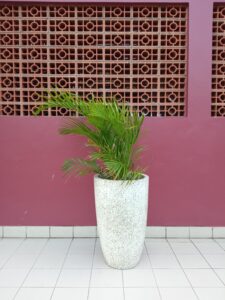
the cat palm stands out as a popular choice for enthusiasts and novices alike. This beautiful palm is one that is loved by humans and pets alike. This is one of those petsafe plants that you will be comfortable allowing your cat or dog be around. If you would like to see other great petsafe options check out michelle @gardeningTLC.
With its graceful fronds and adaptable nature, the cat palm (Chamaedorea cataractarum) brings a touch of tropical elegance to any indoor space. However, like any living thing, it requires proper care and attention to thrive. In this guide, we lead you into the art of caring for your cat palm, exploring the essential elements of its care and cultivation. From light and water requirements to soil composition and maintenance tips, embark on a journey to unlock the secrets of fostering a flourishing cat palm in your home. Whether you’re a seasoned green thumb or just beginning your botanical adventures, join us as we uncover the nuances of cat palm care, ensuring your leafy companion thrives in its indoor sanctuary.
Light Requirements: Finding the Perfect Balance
One of the fundamental factors in cat palm care is providing adequate light. As a native of Madagascar’s tropical forests, cat palms thrive in bright, indirect sunlight reminiscent of their natural habitat. However, they can also tolerate lower light conditions, making them versatile additions to various indoor spaces.
Understanding the optimal light conditions for your cat palm is crucial for its health and growth. Here’s a breakdown of different light levels and how they impact your plant:
- Bright Indirect Light: Cat palms prefer bright, indirect sunlight. Placing them near a north or east-facing window is ideal, as it allows them to receive gentle, filtered light throughout the day. Direct sunlight can scorch their delicate leaves, so it’s essential to shield them from harsh rays.
- Moderate Light: While cat palms thrive in bright light, they can adapt to moderate or lower light conditions. In spaces with less natural light, consider placing them near a well-lit area or supplementing with artificial grow lights. However, be mindful of keeping them too far from natural light sources, as prolonged low light exposure can slow their growth and affect overall vitality.
- Low Light: Cat palms can tolerate low light conditions, but prolonged exposure may lead to stunted growth and leggy foliage. If you must place your cat palm in a low-light environment, ensure it receives occasional exposure to brighter conditions, such as by rotating its position or providing supplemental lighting.
To help you gauge the light levels in your home and find the perfect spot for your cat palm, consider using a light meter or observing the intensity and duration of sunlight in different areas throughout the day. Additionally, here’s a quick reference guide to determine if your cat palm is receiving adequate light:
|
Light Level |
Description |
|
Bright Indirect |
Filtered sunlight, no direct exposure to intense rays |
|
Moderate |
Well-lit area with indirect sunlight, some shadowing |
|
Low |
Dimly lit area with minimal direct sunlight exposure |
Watering: Maintaining Moisture Balance

Proper watering is essential for the health and vitality of your cat palm. As with many houseplants, finding the right balance is key to preventing both underwatering and overwatering, which can lead to root rot and other issues. Understanding the moisture needs of your cat palm and establishing a consistent watering routine will help ensure its well-being.
Here’s a comprehensive guide to watering your cat palm effectively:
- Frequency: Cat palms prefer slightly moist soil but are sensitive to waterlogged conditions. As a general rule, water your cat palm when the top inch of soil feels dry to the touch. Depending on factors such as temperature, humidity, and light levels, this may range from once a week to every 10-14 days during the growing season. In winter or during periods of low light and cooler temperatures, adjust the watering frequency accordingly, allowing the soil to dry out more between waterings.
- Watering Method: When watering your cat palm, aim to thoroughly moisten the entire root ball without allowing excess water to accumulate in the saucer or potting container. Water evenly around the base of the plant until you see water draining from the bottom of the pot. Avoid splashing water on the foliage, as this can lead to fungal diseases and leaf spotting.
- Soil Drainage: Proper soil drainage is crucial for preventing waterlogged conditions. Use a well-draining potting mix that allows excess moisture to escape freely, such as a blend of peat moss, perlite, and coarse sand. Ensure the pot has drainage holes at the bottom to facilitate water drainage and prevent water from pooling around the roots.
- Humidity: Cat palms thrive in moderately humid environments, making them well-suited for indoor spaces with average humidity levels. To enhance humidity around your plant, consider placing a humidity tray filled with water and pebbles beneath the pot or using a room humidifier. Misting the foliage occasionally can also help increase humidity levels, but avoid excessive misting to prevent fungal issues.
To help you establish a watering schedule for your cat palm, here’s a simple checklist to guide you:
|
Signs of Proper Watering |
Signs of Underwatering |
Signs of Overwatering |
|
Soil feels slightly moist |
Wilting or drooping foliage |
Yellowing or browning of leaves |
|
Even growth and vibrant color |
Dry, parched soil |
Mushy or soggy soil |
|
Healthy root growth |
Leaf curling or crispy edges |
Foul odor emanating from soil |
Soil and Potting: Creating the Perfect Growing Medium
The soil composition and potting method play a crucial role in the overall health and growth of your cat palm. Providing a well-draining, nutrient-rich growing medium ensures that your plant receives adequate support for root development and nutrient uptake. Here’s a detailed look at soil requirements and potting techniques for cat palms:
- Soil Composition: Cat palms thrive in a loose, well-draining potting mix that retains moisture without becoming waterlogged. A blend of peat moss, perlite, and coarse sand creates an ideal growing medium, allowing excess water to drain freely while retaining sufficient moisture for root hydration. Avoid heavy or compacted soils, as they can lead to water stagnation and root suffocation.
- Pot Selection: When choosing a pot for your cat palm, opt for a container with drainage holes at the bottom to prevent waterlogging. Select a pot that provides ample room for root growth, allowing the plant to establish a healthy root system. Consider using a lightweight, breathable pot made of materials such as terracotta or plastic, which promotes airflow to the roots and prevents moisture buildup.
- Repotting Frequency: Cat palms typically require repotting every 1-2 years, or when they outgrow their current container. Signs that your cat palm may need repotting include roots protruding from the drainage holes, reduced growth, or soil that dries out quickly after watering. When repotting, choose a pot that is 1-2 inches larger in diameter than the current container, allowing room for root expansion. Gently loosen the root ball and place it in the center of the new pot, filling in the gaps with fresh potting mix.
- Potting Technique: Proper potting technique is essential for ensuring the health and stability of your cat palm. Begin by placing a layer of gravel or small rocks at the bottom of the pot to improve drainage. Add a layer of potting mix, then carefully remove the cat palm from its current container, being mindful not to damage the roots. Position the plant in the center of the pot and fill in the remaining space with potting mix, pressing gently to secure the plant in place. Water thoroughly after potting to settle the soil and hydrate the roots.
To assist you in selecting the right soil and potting method for your cat palm, here’s a summary of key considerations:
|
Soil and Potting Checklist |
|
Well-draining potting mix (peat moss, perlite, coarse sand) |
|
Lightweight, breathable pot with drainage holes |
|
Repot every 1-2 years or as needed based on plant size and growth |
|
Proper potting technique to ensure root stability and hydration |
Temperature and Humidity: Creating a Comfortable Environment
 Maintaining the right temperature and humidity levels is crucial for the well-being of your cat palm. As native inhabitants of tropical regions, cat palms thrive in warm, humid climates reminiscent of their natural habitat. Providing optimal conditions will ensure vigorous growth and lush foliage. Let’s delve into the importance of temperature and humidity control for your cat palm:
Maintaining the right temperature and humidity levels is crucial for the well-being of your cat palm. As native inhabitants of tropical regions, cat palms thrive in warm, humid climates reminiscent of their natural habitat. Providing optimal conditions will ensure vigorous growth and lush foliage. Let’s delve into the importance of temperature and humidity control for your cat palm:
- Temperature Range: Cat palms prefer temperatures ranging from 65°F to 80°F (18°C to 27°C). While they can tolerate slightly cooler or warmer temperatures for short periods, prolonged exposure to extremes can stress the plant and hinder growth. Avoid placing your cat palm near drafts, air vents, or heating/cooling sources that may cause fluctuations in temperature. During winter months, protect your plant from cold drafts and provide supplemental heat if necessary to maintain a consistent temperature range.
- Humidity Requirements: Adequate humidity is essential for cat palms to thrive indoors. They prefer humidity levels of 50% or higher, which can be challenging to maintain, especially in drier climates or heated indoor environments. To increase humidity around your cat palm, consider using a room humidifier or placing a tray filled with water and pebbles beneath the pot. Grouping plants together can also create a microclimate with higher humidity levels. Misting the foliage occasionally can provide temporary relief, but be cautious not to overdo it, as excessive moisture on the leaves can lead to fungal issues.
- Monitoring and Adjusting: Regular monitoring of temperature and humidity levels is key to ensuring optimal growing conditions for your cat palm. Use a digital thermometer and hygrometer to track temperature and humidity levels in the vicinity of your plant. Adjust environmental conditions as needed, such as relocating the plant to a more suitable spot or implementing humidity-enhancing measures. During periods of extreme weather, such as heatwaves or cold snaps, pay extra attention to your plant’s needs and take proactive measures to mitigate stress.
To help you maintain the ideal temperature and humidity levels for your cat palm, here’s a summary of key considerations:
|
Temperature and Humidity Checklist |
|
Keep temperatures between 65°F to 80°F (18°C to 27°C) |
|
Maintain humidity levels of 50% or higher |
|
Protect from drafts, air vents, and temperature extremes |
|
Use room humidifiers, humidity trays, or group plants to increase humidity |
Conclusion: Cultivating a Flourishing Cat Palm
In conclusion, the journey of nurturing a cat palm involves a delicate balance of providing the right light, water, soil, temperature, and humidity. By understanding and addressing the specific needs of this tropical plant, you can create an optimal environment where it thrives and flourishes.
From ensuring adequate bright, indirect light to maintaining proper soil moisture levels and repotting when necessary, each aspect of cat palm care contributes to its overall health and vitality. Additionally, paying attention to temperature and humidity requirements helps mimic its natural habitat, promoting robust growth and vibrant foliage.
As you embark on your cat palm care journey, remember that consistency and observation are key. Regularly monitor your plant’s condition, adjusting care routines as needed to accommodate changes in environmental conditions or growth patterns. By cultivating a deeper understanding of your cat palm’s preferences and behaviors, you can develop a rewarding relationship with this beautiful indoor plant.
In the end, the satisfaction of seeing your cat palm thrive, with its lush green fronds swaying gracefully, makes every effort worthwhile. Whether you’re a seasoned plant enthusiast or a novice gardener, the joy of nurturing a flourishing cat palm is unparalleled, adding a touch of tropical elegance to your indoor sanctuary. With patience, care, and a little green-thumb know-how, you can enjoy the beauty and benefits of a thriving cat palm for years to come.


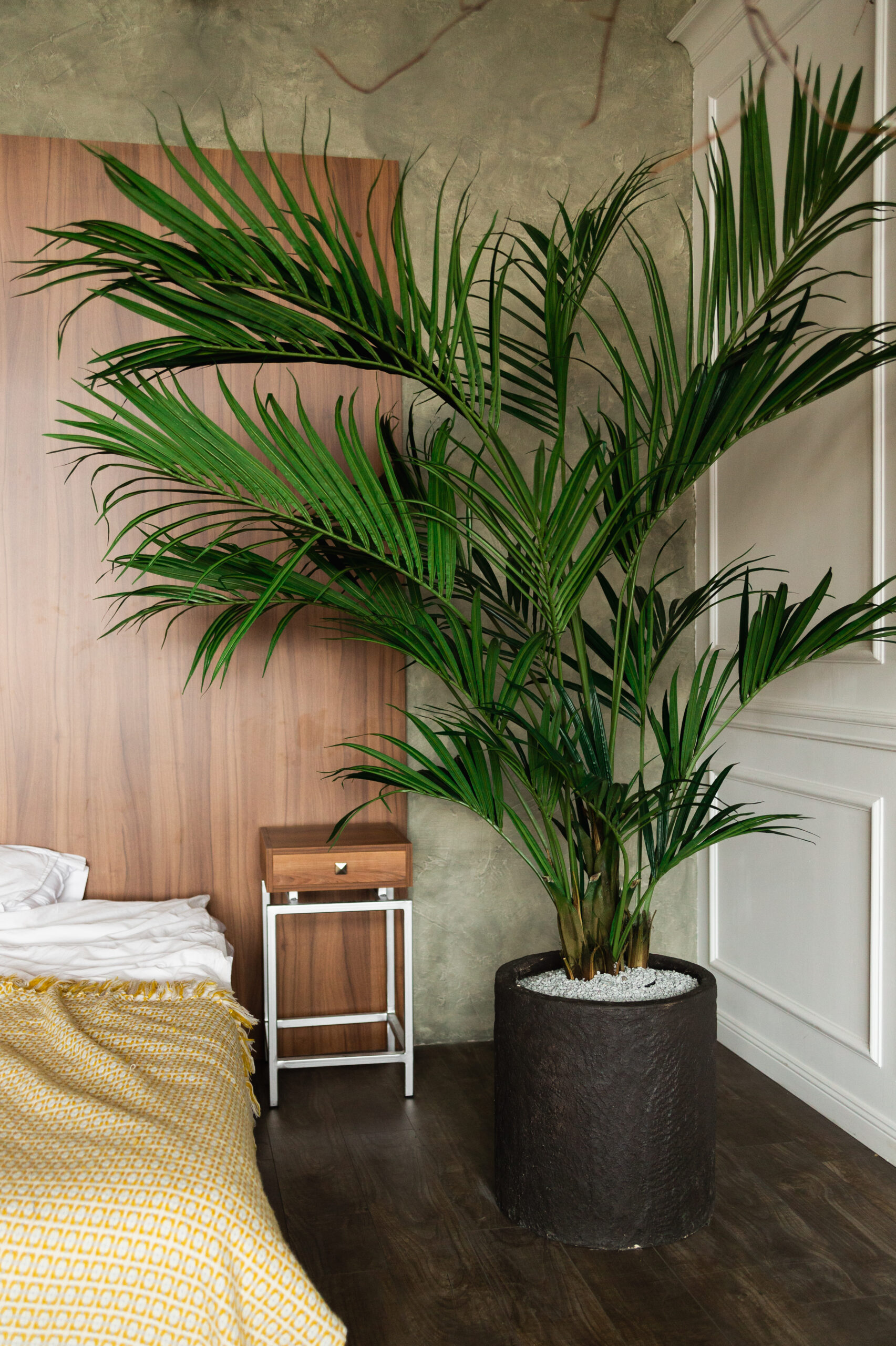
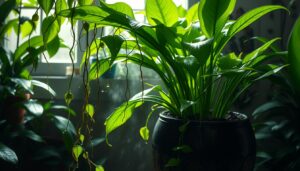
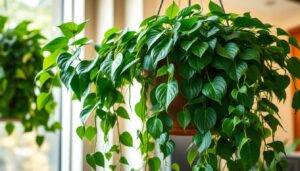
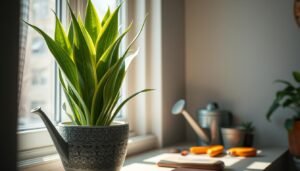
Pingback: Shedding Light on Cat Palm Care: Illuminating Its Sunlight Needs – Trusted House Plant Guide